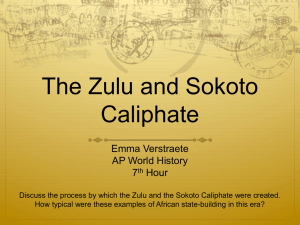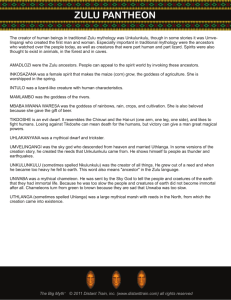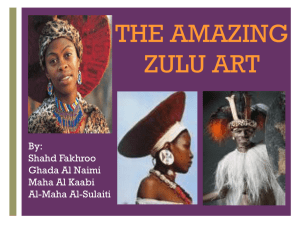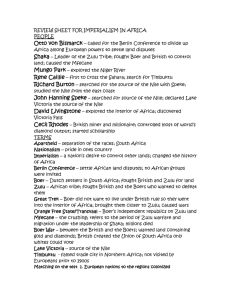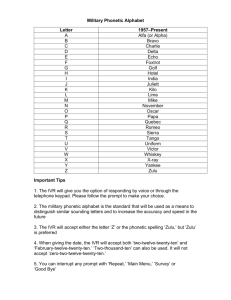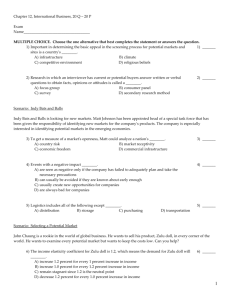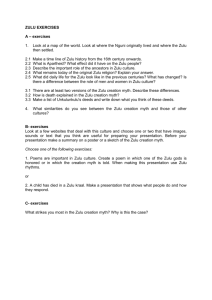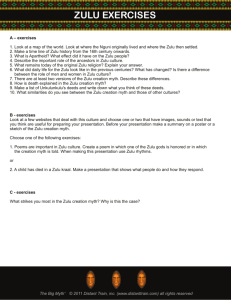ZULU
advertisement
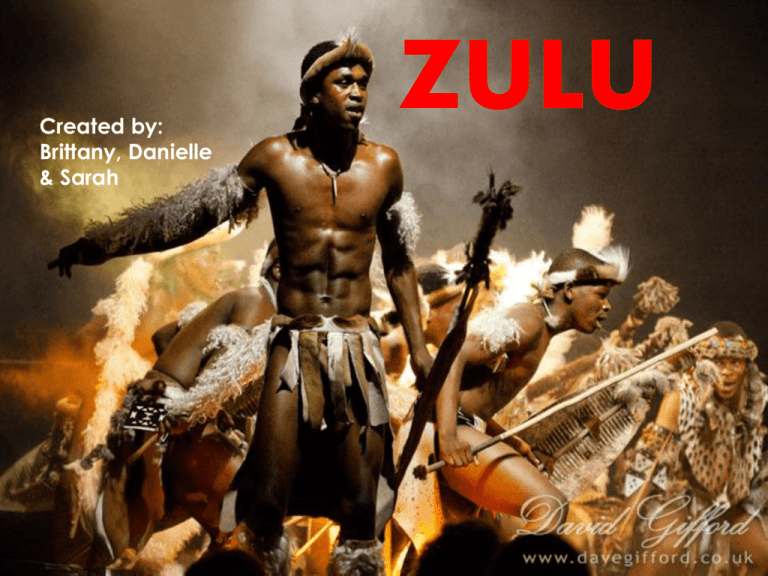
Created by: Brittany, Danielle & Sarah ZULU The Ancient One, known as Unkulunkulu, is the Zulu creator. He came from the reeds and from them he brought forth the people and the cattle. He created everything that is: mountains, streams, snakes, etc. He taught the Zulu how to hunt, how to make fire, and how to grow food. He sent the languid chameleon out into the world with the message that his people will never die. After several days Unkulunkulu became impatient and sent a speedy lizard out into the world with the message that death was on its way. The sift lizard beat the chameleon to the village and death shortly arrived and has never left mankind since. http://www.mythicjourneys.org/bigmyth/myths/english/2_z ulu_full.htm Starting as a clan that belonged to a larger group of people called the Nguni. The Nguni migrated south from central East Africa in the 16th century to the Natal region. As they settled the Zulu built beehive shaped grass huts to live in. The Zulu people believe that they are the direct descendents of a chief called Zulu (which means heaven in the Nguni language). After the death of Zulu, his descendants called themselves abakwaZulu (people of Zulu). The Zulu people also call themselves Abantsundu, which means "brown people". By the early 19th century the Zulu had become the strongest military force in southern Africa (under the leadership of the powerful but violent Shaka). They raided and killed many neighbors and took their land, goods and women. Soon after this, however (around 1830), they had to face the growing colonial presence of the British, who wanted to control the entire southern part of Africa. Zulu people did not make art in the form of sculptures and paintings. Rather, the art was seen in the embellishment of utensils used in the home such as carved wooden meatplatters, milkpails, spoons, walking sticks and headrests. They had strong sense of geometric design representing either masculinity, femininity, fertility, or cattle. As with many African cultures, clothing is of paramount importance to the collector as it embodies the essence of the culture. The Zulu people are renowned for their beautiful beadwork which sometimes carries symbolic messages of love, peace or fertility in the use of geometric patterns. Traditionally, Venetian glass beads were used, but today the use of plastic beads is more common. Anklets, bracelets, armbands, necklaces, crossbands, waistbands, beaded capes and head rings. Weapons were also known as important art pieces. For the Zulu people of South Africa, dance is a metaphor for life. The Zulu have used traditional dance for centuries, not only to commemorate pivotal life moments, or rites of passage, but also to distinguish social status and roles within the tribe. Through dance, the Zulu tell the genesis and journey of their clan, bridging generational gaps in a unique form of storytelling. Movements and Attire › A wide array of stomps and kicks categorize almost every traditional Zulu dance. The Zulus use props such as ankle rattles, shields, headdresses and belts to differentiate social class and societal roles. Both males and females wear limited clothing, which consists predominately of cowhide and bare chests adorned with garlands of beads. Bead color can signify such things as geographical location, "rank, contentment, spiritual love, and marriage" according to Stan Schoeman, author of "Eloquent beads, the semantics of a Zulu art form.“ › http://www.youtube.com/watch?v=-bboJsFVa58 Traditional dance › http://www.youtube.com/watch?v=oVxk59F9LqM War dance http://www.crystalinks.com/zulucreation.html http://www.mythicjourneys.org/bigmyth/myths/english/eng_z ulu_culture.htm http://www.africaart.co.za/artifacts.htm http://www.ezakwantu.com/ http://www.ehow.com/about_6759352_traditional-zuludance.html
